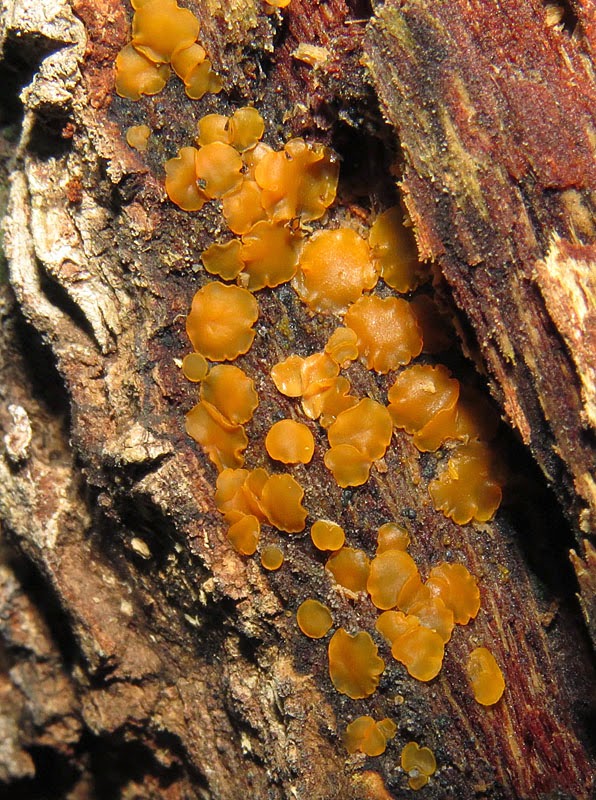This is the 9th in a series of blogs
covering a private tour I led down the Kosñipata Road and the Madre
de Dios River in SE Peru from October 25-November 7.
Today was our second full day at
Pantiacolla Lodge. This is a new location for me, by the way. I have
passed it while traveling between lodges almost every year for the
past five years and each time looked longingly up at the forested
ridge around which southern terminus the Upper Madre de Dios makes a
big detour. Pantiacolla Ridge is the final of a series of arched
Andean wrinkles that seem to radiate to the north-northeast like
waves on a pond disturbed by a tossed pebble, this particular pebble
landing in the Earth's crust right at the famous ruins of Machu
Picchu. The initial ridges close to Machu Picchu and Cusco are
brutally high, but at the southern terminus of this particular ridge
one can easily hike to the highest point at just over 3100 feet.
Easily, that is, if your goal is to get to the ridge and not enjoy
the mind-boggling diversity of nature along the way.
With some trepidation and not a huge
amount of confidence, Susanne and I took a sack lunch and set off to
the ridge. In short, we did well. We made it, 8 kilometers each way,
making few lingering stops, and we're glad we did it. But in
hindsight, we would have liked another day or two here, in order to
explore each stretch of the trail more thoroughly. But that's exactly
the same conclusion I come to at every tropical lodge I visit.
I stopped for one bird photo on the way
up, this Greater Yellow-headed Vulture that was still waiting for
thermals.
We stopped for mushrooms on the way up,
of course, but since many were the same ones we had seen yesterday,
we photographed only strikingly new ones.
Update from Susanne: this is in the general group Discomycetes.
Update from Susanne: this is in the general group Discomycetes.
Update from Susanne: this is a Marasmius sp.
Update from Susanne: Caripia montagnei
This looked so much like yesterday's
damselfly that I decided it must also be a Heteragrion, but I
haven't been able to ID the species.
I've discovered a new fondness for
Marantaceae and would like to get to know the genera better. But I'm
still not sure how to tell Calathea from Hylaeanthe.
This is clearly one or the other.
Any family in the order Zingiberales
also attracts my attention, here two members of the family Costaceae.
First, Costus scaber, with a very elegant but typical spiral
shape to the growth axis.
And a very handsome Costus
erythrophyllus, notable for the red underside to the leaves as
well as the very showy flower.
The lodge's trail map doesn't indicate
that there's more than just one destination, but the signs here
obviously give us a choice. We chose Shintuya.
The views from the overlook were
amazing. Since we had stopped several times, we arrived here in time
for lunch and a very quiet time of day bird-wise. A White Hawk soared
below us right at first, but the next 15 minutes, as we ate our
lunch, were birdless and dominated by stingless bees. The first photo below is looking south towards the main chain of the Andes, while the second is looking to the southeast, zoomed on the town of Shintuya.
On the way down we stopped for many
cool things. While Susanne photographed a mushroom, I pursued this Three-striped Rocket
Frog, Allobates trilineatus.
This speckled stink bug was well
camouflaged.
This not-so-well camouflaged katydid
was lucky I wasn't a hungry trogon or monkey.
I have seen this long-horned beetle, Taeniotes orbignyi, at Cristalino Jungle Lodge.
The most exciting butterfly on the hike
was this rare metalmark, Argryrogrammana rameli.
We stopped at some random spot on the
trail, probably to get a closer look and perhaps a photo of a
mushroom, when I heard a sudden burst of wing beats nearby, saw a bit
of motion, and landed my binoculars on a Hairy-crested Antbird. I
instantly recognized the whole situation as a bird flushed from a
nest, and quickly noticed a hollowed-out dead tree stem next to the
trail.
This is what was inside. A rare find!
A bit closer to the lodge, we came
across a group of Brown-mantled Tamarins, Saguinus fuscicollis.
I knew we were close to the lodge when
we came to the junction of yesterday's trail where I had hung a piece
of heliotrope that I had snagged from Villa Carmen. Here, sucking up
the pyrrolizidine alkaloids, was an Agnosia Clearwing, Ithomia
agnosia, as well as a clearwing moth.
































No comments:
Post a Comment